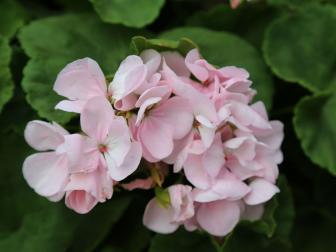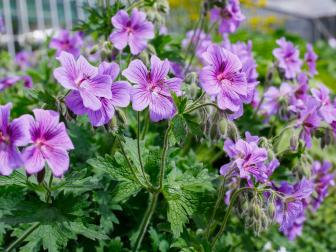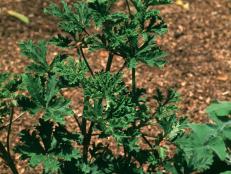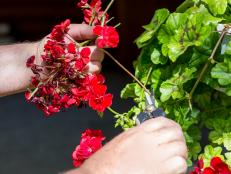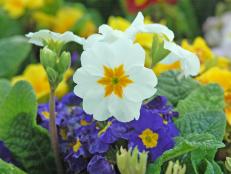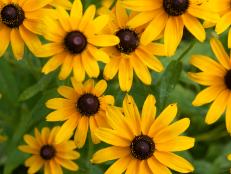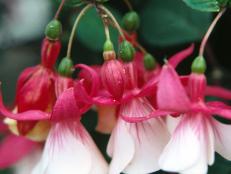Geranium Care: Your Guide to Growing Geraniums
Colorful geraniums bring the goods all season long with beautiful blooms and eye-catching leaves. Learn how to help your geranium plants thrive.
Count on sun-loving geraniums to deliver nonstop color from late spring until fall. These blooming beauties thrive in beds or containers and stage an easy-care flower show.
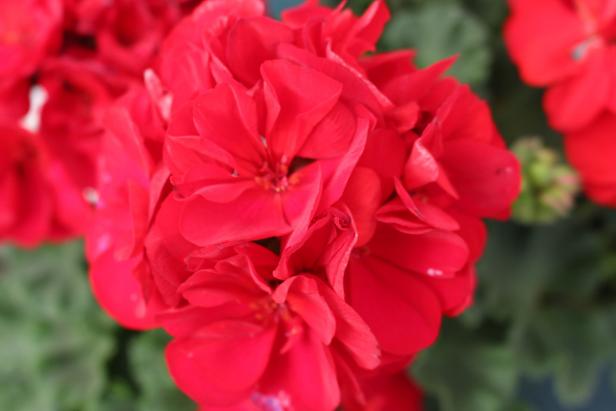
Look for geranium plants in a wide range of hues and sizes. Whether you're growing annual zonal geraniums, cool-season Martha Washington geraniums or old-fashioned scented geraniums, some aspects of geranium care remain the same. Review the basics to help grow healthy, flower-packed geraniums.
Common Types of Geraniums
Botanically, only perennial geraniums are true geranium plants. The most popular annual geraniums — the ones you need to plant each year — actually belong to the Pelargonium family, which means they're not true geraniums at all. But at the garden center, they're sold as geraniums and that's what everyone calls them (except the most serious botanists).
Pretty Pelargoniums 13 Photos
Endless pelargonium varieties are just one feature of the stunning botanical garden Wisley, outside of London.
Even though the most popular geraniums are annuals, you can save them over winter with minimal effort. Just bring them inside before fall frost and replant outside in spring. These are some of the most popular types of geraniums.
Zonal Geranium
Zonal geraniums are the most common type of geranium, with sturdy flower stems topped with balls of blooms. The name comes from patterns on leaves that deepen as a leaf matures. Zonal geraniums open flowers in a rainbow of hues, including red, pink, peach, white and bicolor blends.
Seed Geranium
A seed geranium is the near-twin of a zonal geranium. Probably the easiest way to tell them apart is by how they're sold. Seed geraniums usually cost less and are sold in packs or flats. The plants are also usually smaller overall than a zonal geranium, which costs more and is typically sold in individual pots. Seed geraniums are ideal for filling planting beds. Flowers open in a wide range of colors.
Martha Washington Geranium
Martha Washington geraniums, also known as regal geraniums, have showy flowers with velvety petals in shades including burgundy, pink, white and bicolor blends. Martha Washington geraniums are a cool-season bloomer that's usually available in early spring. It's a favorite gift plant for spring holidays like Easter and Mother's Day. Once flowers fade, it's tough to get more blooms, except in regions with cool summers.
Ivy Geranium
If you want a geranium hanging basket, look for an ivy geranium. This geranium naturally grows in a trailing form. It's a perfect choice for hanging baskets and window boxes. Flowers open in a range of colors, including lavender, pink, burgundy, white and bicolor blends.
Variegated Geranium
Variegated geraniums up the geranium game by adding multicolored leaves to the plant. This is a type of zonal geranium that grows strongly upright — as tall as 3 feet. Leaves are often green and white, but can also have a trio of shades like cream, green and bronze. They look fantastic in containers, where you can see the colorful leaves close up.
Interspecific Hybrid Geranium
When you cross a zonal geranium with an ivy geranium, the result is called an interspecific hybrid geranium. It's like getting the best of both worlds in one plant: big, nonstop flowers on a plant with a full and mounding or slightly trailing growth pattern. These geraniums have great heat tolerance (even Texas heat) and fill planting beds and containers with strong color. Two common varieties are Calliope and Calliente.
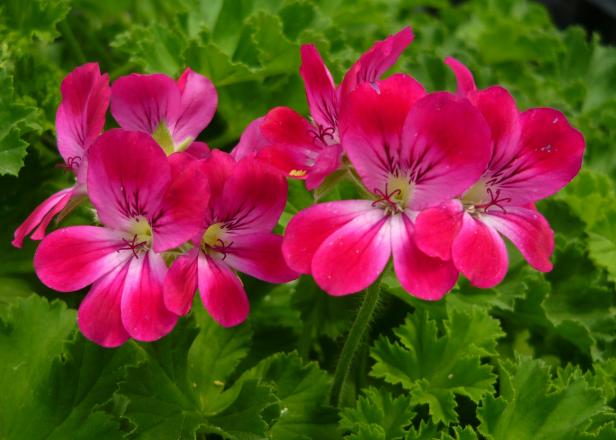
Colonial Creek Farm
Scented geranium lime pink champagne
Scented Geranium
Scented geraniums release amazing aromas when you brush or rub their leaves. Fragrances include lemon, chocolate, peppermint, nutmeg and cinnamon. This variety (above) has lime-scented leaves and is sold as lime pink champagne. You can use scented geranium leaves to flavor baked goods or create scented potpourri, sugar or oil infusions. The essential oil extracted from a rose scented geranium known as Attar of Roses (Pelargonium capitatum) was popular at one point to replace expensive rose attar in perfume.
This group of geraniums also has the botanic name Pelargonium. The plants grow to different sizes, from 6 to 36 inches tall. Scented geraniums with smaller leaves tend to be smaller plants, while ones with larger leaves grow taller. Older leaves have stronger fragrance than younger ones. Popular varieties include sweet rose scented geranium (Pelargonium graveolens) and citronella scented geranium, which is said to repel mosquitoes (research says it doesn't really).
Scented geraniums are native to South Africa, which means that except for in the warmest zones, you need to shift these fragrant geraniums indoors for winter. Happily, these gems thrive in containers, which makes overwintering geraniums indoors easy.

Ball FloraPlant
Geraniums 'Dark Red' and 'White Watermelon.'
Geranium Care
Growing annual geraniums isn't difficult. Follow these basic steps to grow your best geraniums ever.
- Planting: Most geraniums crave sunshine. A full day is great except in the warmest zones, where plants thrive with shade during the hottest part of the day. Martha Washington and ivy geraniums need light shade in all regions, especially as summer temperatures soar.
- Soil: Fertile, well-drained soil yields best growth. For geraniums in pots, choose a commercial bagged mix developed for use in containers. In planting beds, mix organic matter like compost, rotted manure, bark fines or other locally available material into soil to improve fertility and drainage. Your geraniums will thank you with lots of blooms.
- Fertilizer: Annual geraniums have big appetites. In planting beds and pots, mix a slow-release fertilizer into soil at planting time. Make a second application according to label instructions. Many gardeners feed geraniums with a liquid fertilizer every 14 to 20 days, starting four weeks after planting.
- Pests: Aphids, slugs and caterpillars can attack geranium leaves and flowers, but damage is usually minor. These pests are easily controlled by handpicking or spraying insecticidal soap or Bacillus thuringiensis kurstaki, a natural caterpillar control. Whiteflies may attack leaves in late summer. If present, you'll find them on leaf undersides. There's no need to treat whiteflies unless you plan to overwinter geraniums. Do not take a whitefly-infested geranium indoors, or you risk infesting all of your plants. The worst geranium pest is budworm, a moth larva (caterpillar) that burrows into flower buds, munching petals. When blooms open, petals have holes or are shredded. Often flowers rot before unfurling. Budworms are tough to control because sprays don't penetrate flower buds. Avoid overwintering potted geraniums that had budworms. If you must save them, get rid of the soil (that's where budworms overwinter).
- Disease Problems: Geraniums are prone to fungal diseases, which readily start on spent blooms. Remove dead flowers regularly, snapping stems off at the base. Do not toss them onto the ground beneath the plants; instead bury them in the compost pile. If rainy weather soaks flowers and you notice fuzzy fungus starting to grow on petals, remove any flowers that show mold, whether or not they're fully open. This keeps fungus from overrunning the plant. Help prevent disease outbreaks by giving geraniums ample air circulation. Don't crowd plants in beds, and keep pots in areas where there's good air movement.
- Wintering Geraniums: You can save geraniums over winter by placing potted plants indoors near a bright east- or south-facing window. Or take stem cuttings and root them. To overwinter geraniums in a dormant state, dig up plants from pots or beds, and shake soil away from roots. Place plants in a paper bag, box or bucket and stash it in a cool, dark place like an unheated bedroom, basement or fruit cellar. Let plants dry completely. Water once in midwinter by dipping the rootball into water. Let it drip dry before tucking plants back into their winter quarters. Move geraniums outdoors in spring when all danger of frost has passed. Once new growth appears, prune any non-sprouting stems.
The True Geraniums: Perennial Geranium
If you want a geranium that returns each year after winter, look for perennial geraniums. Botanically, these are true geraniums and are often called hardy or cranesbill geraniums. At the garden center, look for them in the perennial section under "Geranium."
Perennial Geranium Care: Your Guide to Growing Hardy Geraniums
Learn why perennial geraniums should be your new favorite plant. These hardy geraniums bring the color to low-maintenance plants.
Most perennial geraniums are hardy in Zones 3 to 8. They typically have strong constitutions and spread in planting beds. Some examples are wild geranium (Geranium maculatum), bloody cranesbill (Geranium sanguineum; 'Max Frei' and 'Rozanne' geraniums are popular) and 'Johnson's Blue' geranium (Geranium 'Johnson's Blue').







